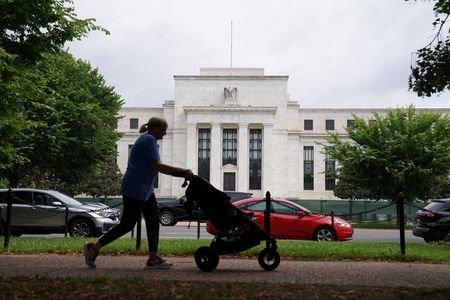By Lindsay Dunsmuir
(Reuters) – The Federal Reserve will probably need to raise interest rates to “just above” 5% and then hold them there for a period, Boston Fed President Susan Collins said on Thursday, the latest U.S. central banker to maintain a higher policy rate is needed to successfully bring down inflation.
“I anticipate the need for further rate increases, likely to just above 5%, and then holding rates at that level for some time,” Collins said in prepared remarks to a conference organized by the Boston Fed, echoing a near-unanimous sentiment expressed by her rate-setting colleagues in recent weeks.
Collins also said it was now appropriate to slow the pace of rate hikes, after the central bank last year lifted borrowing costs at the fastest pace in 40 years in order to bring down high inflation by dampening demand across the economy.
The Fed’s benchmark overnight lending rate currently sits in a target range of 4.25% to 4.50% and a quarter percentage point hike is anticipated at the conclusion of its next two-day meeting on Jan. 31-Feb. 1. Collins indicated earlier this month she was inclined to support such a move.
“More measured rate adjustments in the current phase will better enable us to address the competing risks monetary policy now faces – the risk that our actions may be insufficient to restore price stability, versus the risk that our actions may cause unnecessary losses in real activity and employment,” Collins said.
Slowing inflation, weakening consumer spending and other signs the Fed’s actions are beginning to weigh on growth have helped stoke investor expectations that the Fed will end its current round of rate increases sooner than Collins and her colleagues expect, with the policy rate just shy of 5%.
But Collins cautioned that the fight against inflation, still running at almost three times the Fed’s 2% target by the central bank’s preferred measure, was not yet won and noted there was “a long way to go” to get demand for labor back into better balance, to slow the pace of price increases further.
“While the latest average hourly earnings data suggest some softening of wage pressures, labor costs continue to grow more rapidly than is consistent with 2% inflation,” Collins said.
(Reporting by Lindsay Dunsmuir; Editing by Chizu Nomiyama)

